Your Guide to the Types of Ramen in Japan
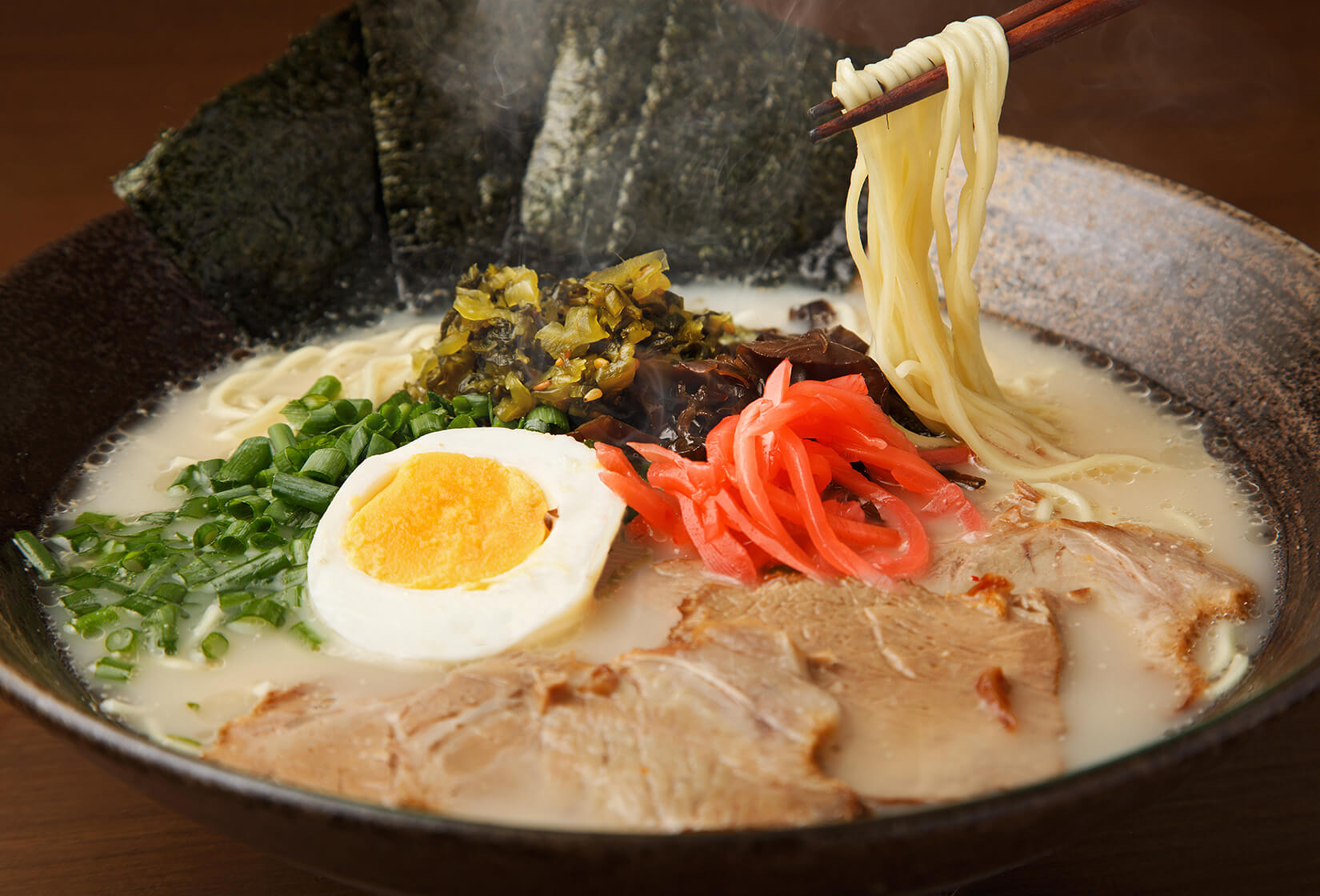
When it comes to Japanese cuisine, ramen is surely one food item you must try. It is common for people to have frequent ramen cravings after having enjoyed at least one bowl in their lives.
This delicious Japanese noodle dish is truly among the country’s most well-loved comfort food. In fact, it has been a staple in many restaurants and events, and even animated in manga and anime.
Ramen also does not discriminate. From CEOs to rank-and-file employees, you can find business people across various industries flock to the nearest ramen shop after a long day at work. For those on the go, the dish also comes in the form of ubiquitous instant ramen and a vending machine-prepared type.
Regardless, the best ramen still consists of rich stock simmered for long hours, hand-made noodles, and different regional variations.
Table of contents
Ramen Guide: Types of Ramen in Japan

In its most basic form, traditional ramen consists of soup and noodles. The noodle shape and thickness vary on the ramen type, regional variation, or shop. While various flavorful toppings and seasonings complete the dish, the soup base in itself is what gives each ramen its unique kick.
Its global impact has also been long renowned. Instant ramen noodles were voted as the greatest Japanese export of the 20th century, placing ahead of karaoke machines, walkman, and Akira Kurosawa films.
Served in more than 24,000 restaurants in Japan, ramen is revered for its culinary complexity – from the depth of the broth’s flavor to the perfect chewiness of the handmade noodles.
The Birth of Japanese Ramen: A History
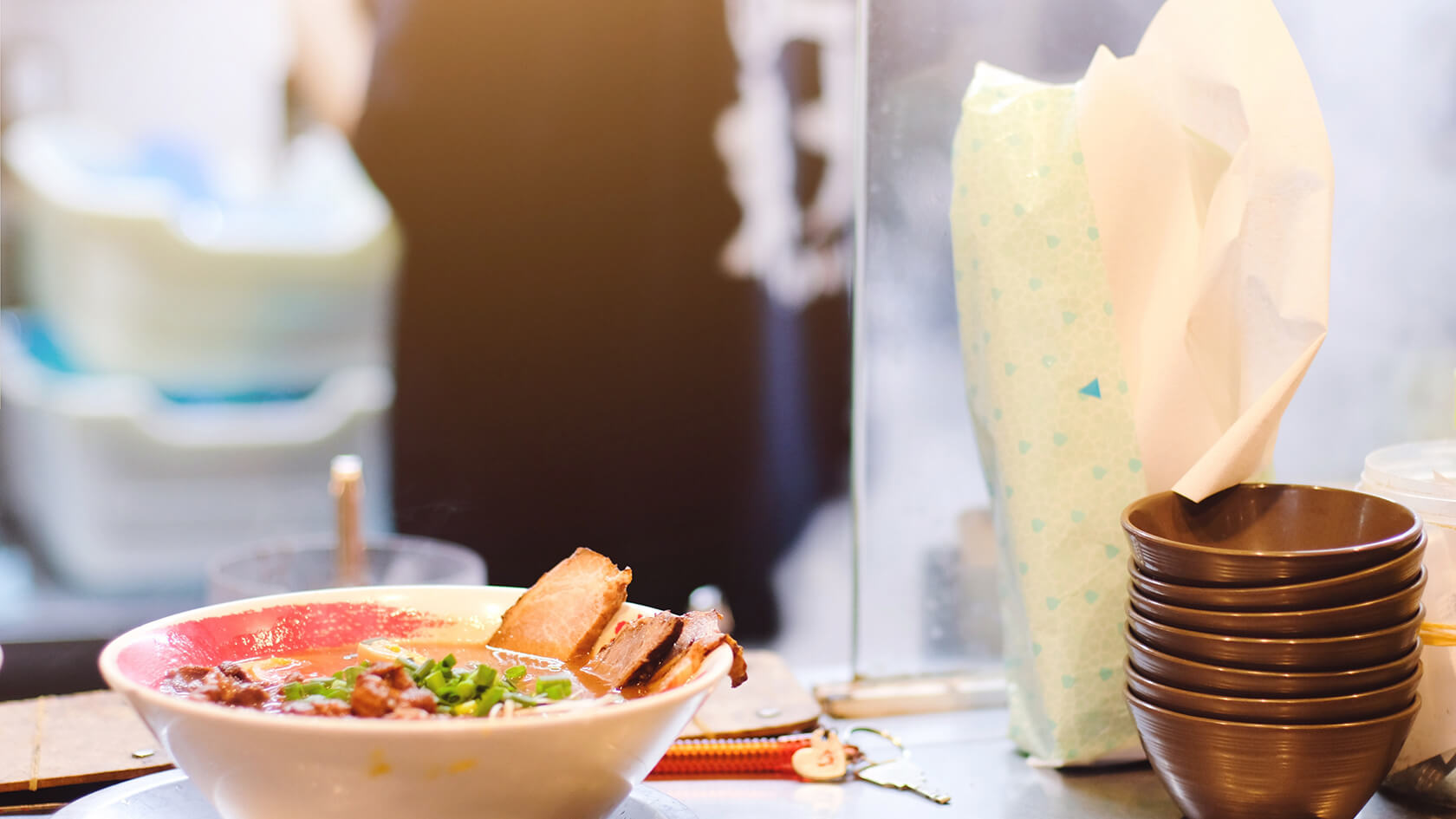
While ramen is an extremely popular meal across Japan, this dish is actually of Chinese influence and origin.
There are three main origin myths behind the Japanese ramen. The first acknowledges a legendary feudal lord, Tokugawa Mitsukuni, as the first to eat ramen in the 1660s. It recounts a historical record of a Chinese refugee who gave him advice on what to add as udon soup toppings to elevate its taste: garlic, green onions, and ginger.
The second account coincides with the time Japan opened its doors to the outside world in the late 19th century. Several port cities like Kobe and Yokohama attracted Chinese merchants who brought with them a noodle soup called la-mien, handmade noodles in a light chicken broth.
The dish was known as Nankin soba (Nanjing noodles) after the capital of China. Since then, the early version of ramen has been continuously refined and improved.
The third tale credits a single person, Ozaki Kenichi, who opened a shop called Rai-Rai Ken in 1910 in the Asakusa district of Tokyo. He was working as a customs agent in Yokohama before serving the first version of authentic Tokyo-style ramen.
Four Famous Types of Ramen
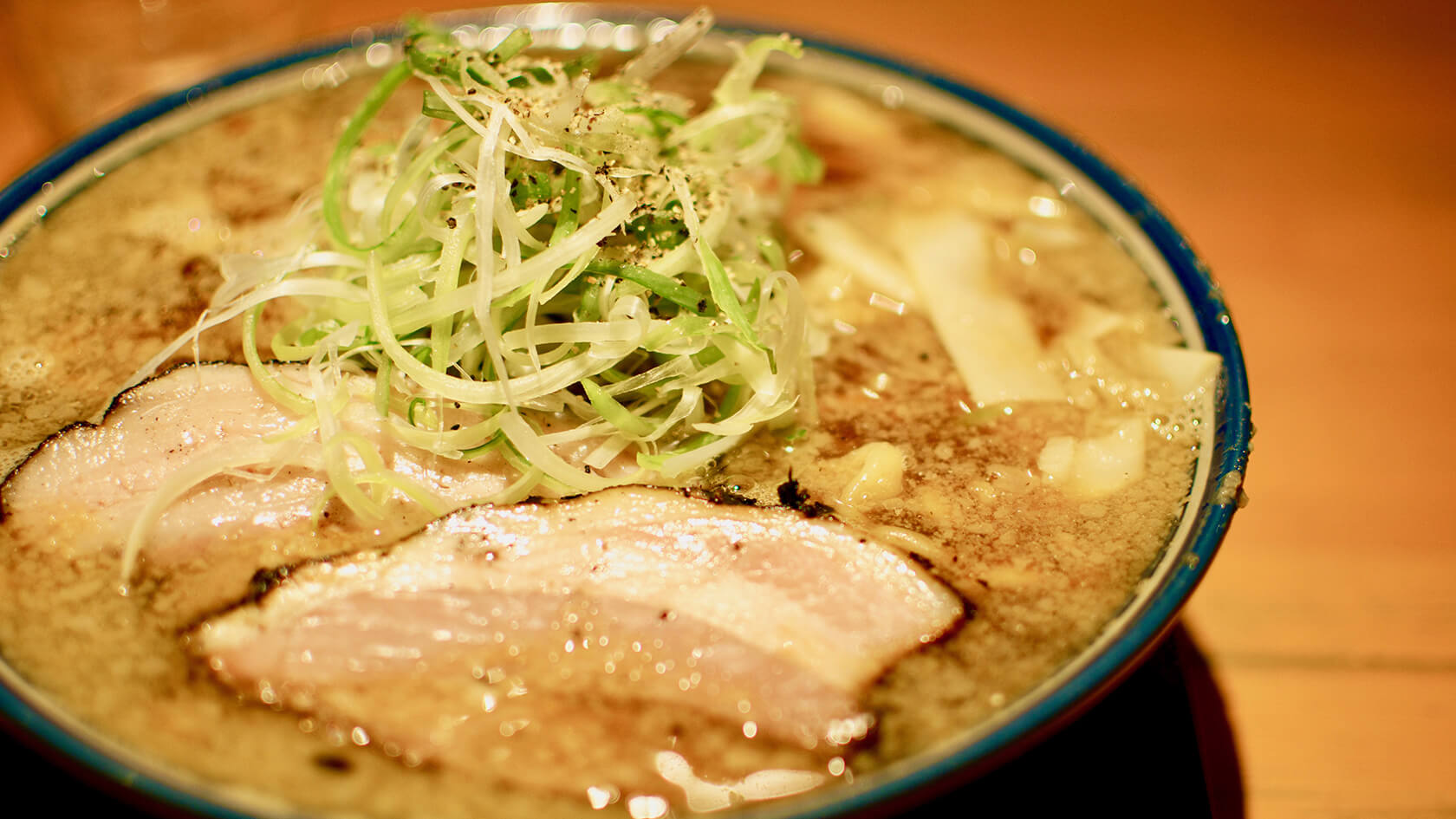
Ramen comes in all forms and sizes. To narrow down this broad list, here are the 4 major types of ramen.
- Shio ramen has a salt-based soup broth. It is considered as the lightest among the 4 types at 400 calories. This ramen is often clear or light-colored and the salty broth has the lightest taste of all four ramen variations.
- Tonkotsu ramen has a pork bone-based broth, with 600 calories per bowl with toppings. It commonly has the least clear broth as it contains salt and soy sauce. Tonkotsu, which translates to “pig bone”, is made by boiling pork meat and bones together to achieve a thick broth packed with meaty flavor.
- Miso ramen is made with miso-based broth, with 550 calories per bowl. Its flavor comes from the fermented Japanese soy paste which gives it a full, savory taste. Sometimes, miso paste is also added to other ramen broths.
- Shoyu ramen has a soy sauce-based broth. It only has 475 calories per bowl and is considered as one of the most common ramen broths. It is often flavored with meat or fish slices. Usually, the special soy blend is unique with each ramen shop as some ramen chefs like to make it from scratch.
Noodle Types and Common Toppings
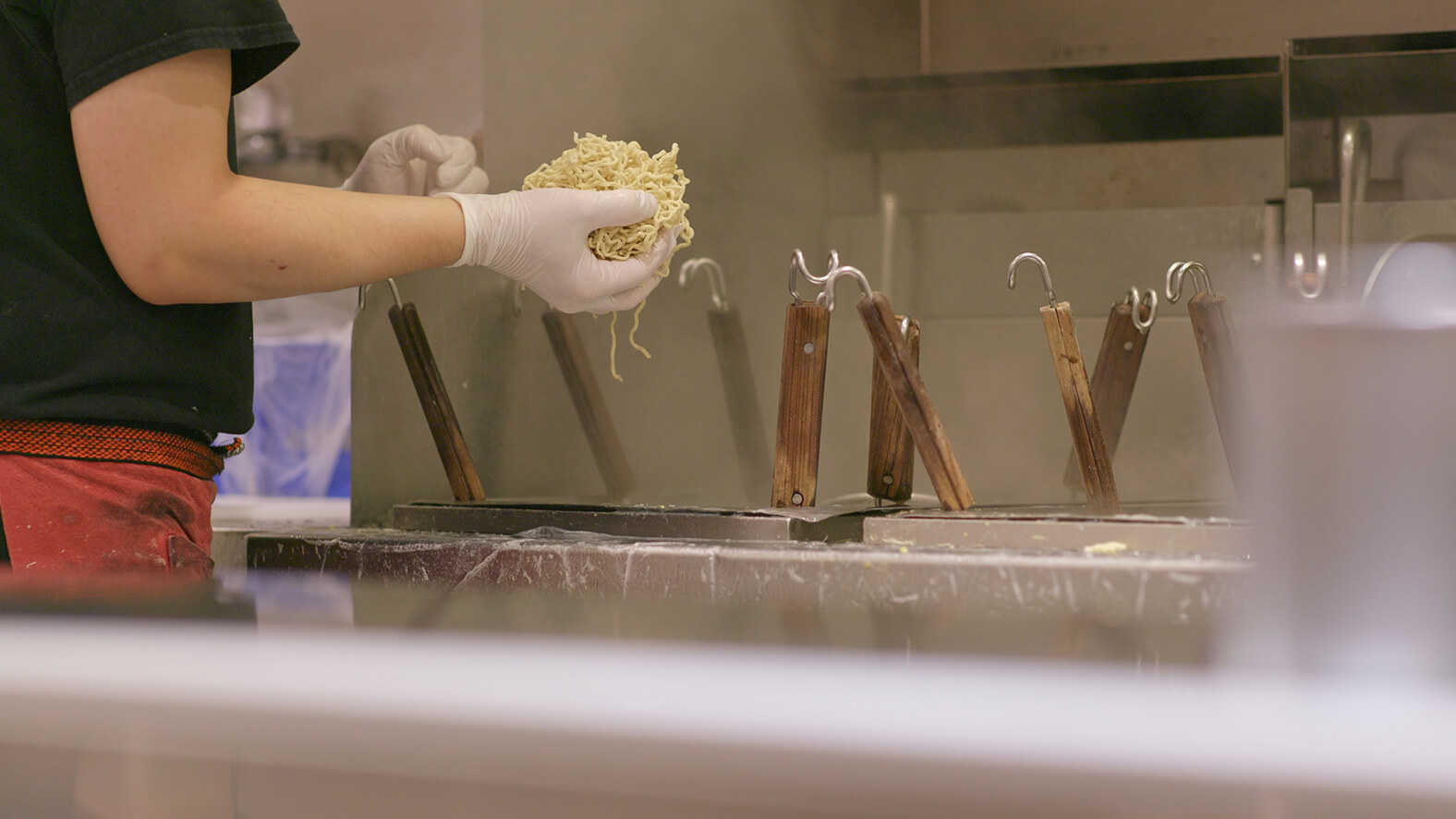
While the essence of Japanese ramen usually lies in the broth quality, the noodle type and toppings are also crucial in making a good ramen dish.
The type of noodles used is a decision made carefully by each shop, based on what will best compliment the broth. It varies from one region to another. For instance, Hokkaido ramen uses thick noodles (1.8 millimeters) while Hakata ramen and other southern varieties use thin (1-millimeter) straight noodles.
The noodles are made of wheat flour, salt, and a special mineral water called kansui to supply their characteristic bounce and yellowish hue. Kansui has high alkalinity, thus giving the noodle mixture its distinct chewiness, color, and taste.
Additionally, toppings also differ depending on the regional variety and shop but there are staples you can find in almost any bowl.
Popular ramen toppings include nori (crunchy seaweed strips), chashu (pork meat slices seasoned with soy sauce), seasoned boiled eggs, kamaboko or narutomaki (formed fish paste with a pink whirlwind symbol), freshly sprinkled scallions, menma (aromatic bamboo shoots), bean sprouts, corn, and butter.
Regional Japanese Ramen Variations
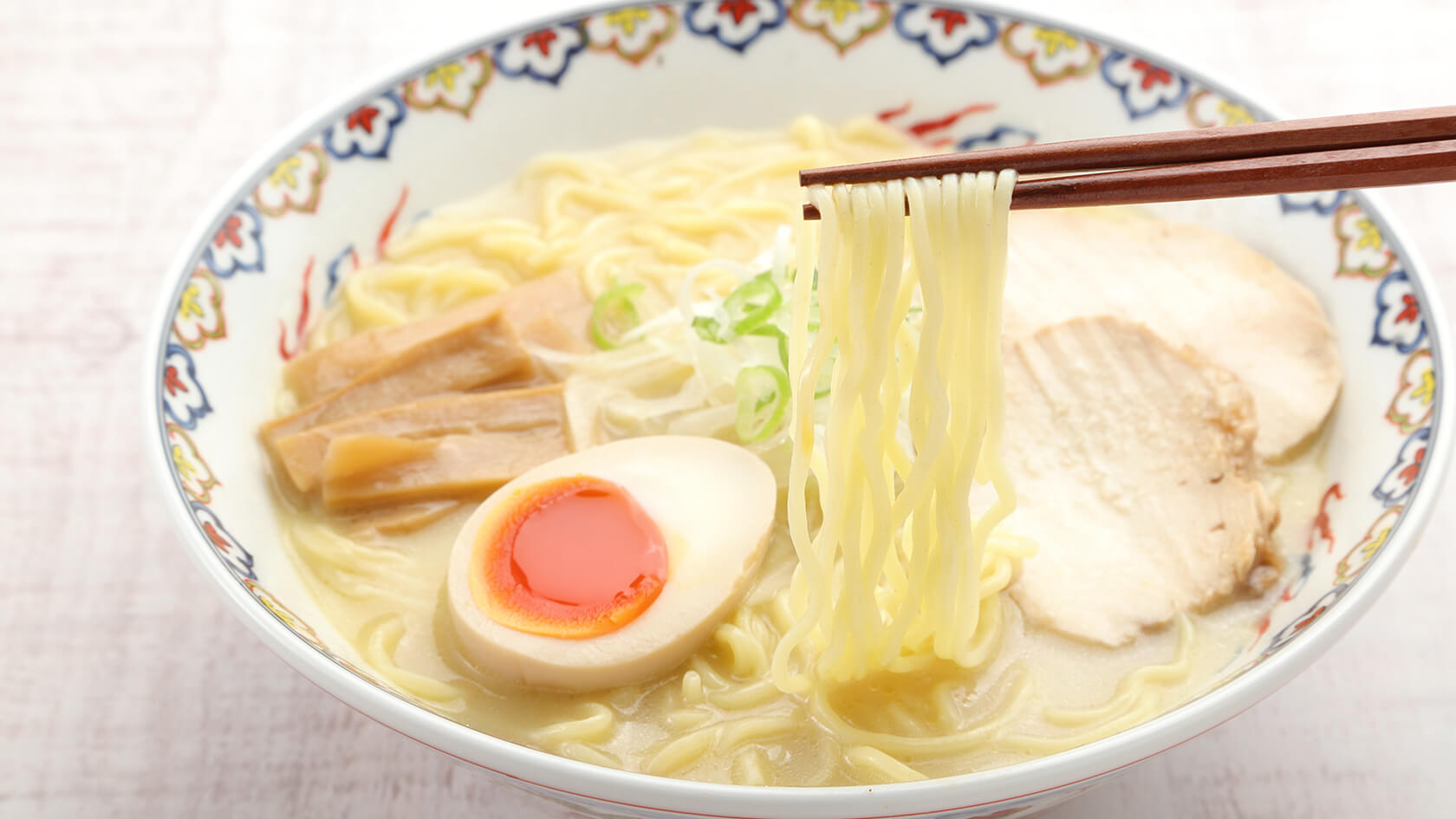
Ramen is a rich dish filled with endless potential. Accordingly, there are at least 30 regional varieties of ramen in Japan with different broths, noodles, seasonings, and toppings.
Famous variations include:
-
Sapporo ramen
– Miso ramen with seafood
-
Hakata ramen
– Tonkotsu, or pork bone ramen, with thin firm noodles
-
Kitakata ramen
– Shoyu ramen with flat curly noodles
-
Wakayama ramen
– Tonkotsu shoyu ramen
-
Onomichi ramen
– Fish and shoyu ramen broth
-
Nagoya “Taiwan” ramen
– Spicy ramen with ground meat
-
Okinawa soba
– Udon-like noodles in ramen broth
-
Hakodate ramen
– Salt ramen with kelp, seafood, chicken, and pork broth
-
Kurume ramen
– Pork bone ramen with broth thicker than Hakata ramen
-
Kagoshima ramen
– Pork bone ramen with chicken, vegetable, sardine, and dried shiitake broth
-
Nagasaki champon
– The noodles are cooked in the broth along with seafood and vegetables
Ramen Etiquette – The Proper Way to Enjoy a Hearty Bowl

There is nothing quite comforting like a hot bowl of ramen, but how do you know if you’re eating it right? Ramen can be an intimidating dish to enjoy, especially with the mess it may make with each slurp.
To help you get by, there are basic etiquette tips to eat ramen like a local and make sure you’re showing appreciation to the chef. Start by sampling the soup first to fully experience the taste of ramen. Try the broth as it was intended and hold off adding black pepper, chili oil, or garlic. Once you’ve sampled some, feel free to season to your liking.
While slurping is frowned upon when eating western cuisine, it is encouraged to do so when enjoying a warm bowl of ramen. It cools the noodles so you can eat quickly and helps you taste the maximum flavor of the hearty dish. Slurping ramen noodles is also one good way to compliment the chef.
Eat the egg and meat slices separately from the broth and the noodles. Consider it as side dishes floating around in your bowl. However, you would want to slurp up the veggies in unison with the noodles and broth.
Lastly, make sure to eat your ramen quickly. Ramen is meant to be enjoyed fast while it’s still piping hot. The noodles tend to cook while sitting in the bowl, and you would want to enjoy its firmness before they turn soggy.
Conclusion

What goes in a bowl of ramen – broth, toppings, and noodles combined is what makes it one of the world’s most-loved Japanese dishes.
Magic happens when the piping hot broth meets the silky al dente noodles.
This noodle dish truly has an intoxicating allure when served steaming hot, inviting you to take that first giant slurp. Indeed, ramen is a top contender for Japan’s national dish as each slurp gives you a rich taste of Japanese cuisine.
Should you visit Japan in the future, be sure to try the local ramen wherever you stay in the country. Each region features a unique ramen variation that will surely be a gastronomic experience for every foodie.
The different regional variations of ramen is a great way to experience the local culture for yourself, and who knows – you may just discover a new favorite ramen type.
As the Japanese say before enjoying a meal, itadakimasu!
Motto Japan, the community platform to support foreigners with the foundation for life in Japan, including Japanese study, job opportunities, and housing service. Motto Japan Media will provide a wide variety of information for Japanese fans all over the world, to create a cross-cultural environment and enrich the life of foreign residents in Japan!





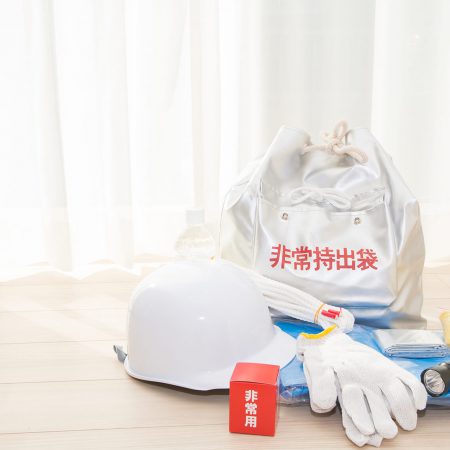
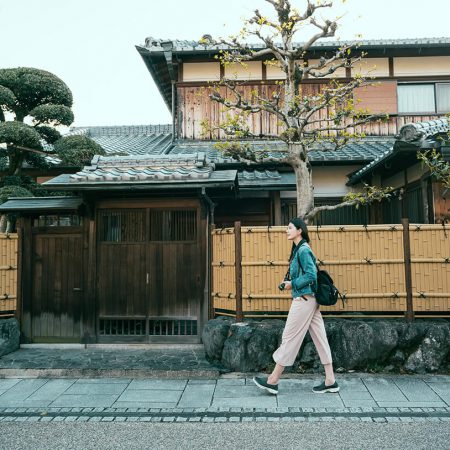






Leave a Reply